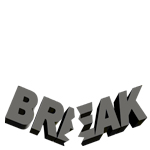 If you’re like many Americans, your annual spring cleaning has been completed, and you now have improved space and time for the light, airy luxuries of summertime. But what if you took it one step further and gave your entire life a good healthy spring cleaning? I’m talking about the exercise of Completion.
If you’re like many Americans, your annual spring cleaning has been completed, and you now have improved space and time for the light, airy luxuries of summertime. But what if you took it one step further and gave your entire life a good healthy spring cleaning? I’m talking about the exercise of Completion.
Completion is one of the fastest ways to make space for new and better things to enter your life, and certainly to attract some richer wholeness.
Have you wondered why it’s so hard to start new things, lose those last pounds, get better work, make more money, enjoy more leisure time? I’ll practically guarantee that you are juggling so many incomplete things in your life that there is no room for anything better to come into the picture.
You probably have a good understanding already of Closure, commonly described as the resolution of a relationship or its issues in a person’s life, not to mention the contentment that comes with it. Completion is much like closure, but it’s all about the outstanding or unfinished stuff in relationship with yourself. And I say stuff because it encompasses all manner of things that you may have left incomplete: experiences, tasks, lists, projects, conversations, plans, goals, and so on. The amount of incomplete stuff with which we live clutters up our lives to no end. And what happens then? New stuff has a much harder time to enter the picture.
Without going into any highfalutin or complex science, suffice it to say that physicists have proven that the entire universe and everything in it create a vacuum. Everything forms a unified whole. So following this, new things can only come or happen when old things fall away or disappear. Something must go for the vacuum to allow space for new things. This forms one of the bases of attraction.
Much of my coaching practice is based around attraction. A lot of my clients are creative types by nature, people for whom ideas, thoughts and the creative process hold a lot of importance. When I start working with them, the first thing we do is make a list of all of the incomplete items that are hanging over their heads. And invariably after a week or two, it never fails that finishing a few of these items is followed very soon after by a surge of creativity and productivity.
The same consistently holds true for all of my clients, and often comes in the softer signs of extra time, greater peace of mind, less worry, less stress, even more money. One client started completing lots of loose ends after moving across the country, and landed a job she never had any realistic expectation of getting after interviewing months before. Some like to talk about coincidence, but what was the visible and quantifiable change throughout it all? She made a whole lot of room in her life, and something came to fill the void. And she moved right back across the country for her job of choice.
Completion works on a lot of levels of attraction too. First there is the visible level of literally getting rid of things and making actual space in your environment. Next there is the time that is created by completing projects that consume your planning, that keep you anchored in the planning stages without the bigger actions that move your goals, hopes or dreams forward.
The most valuable levels that Completion works on, though, are the non-visible ones, the levels of your spirit. For example, my parents have been discussing cleaning out their basement practically since they moved into their new home, roughly six years ago. They have spent so many hours discussing, arguing over, wondering about, and worried about all of the ‘stuff’ in their basement, all of that time could have been put to richer use, doing the things they love to do. Wasting their conscious time on this incomplete project diverts their positive energy into this soul-sucking topic. Our conscious energy, our life energy that propels us forward, that keeps us excited about our activities and relationships, is the level that Completion works most richly on.
The tried and true way to embrace Completion is to be methodical, and have some fun with it at the same time. First, remind yourself why Completion will serve you. Make a list of all of the new things that you want in your life: more quality time with your family, spouse, kids; money for better vacations; new appliances, gadgets, even toys for your home and leisure time; time to volunteer, meet new people, make new friends, engage in a worthy cause; a new, more satisfying career, job or workplace; the list goes on to encompass your wildest imaginings. Once you have a clearer idea of how much richer you want your life to be, then you can make a master list of Completion.
Sit yourself down in a quiet place, and write down 20 things in your life that are incomplete. I bet that it will be faster than you think when you really consider all of the things you’ve been talking about and wanting to do something about, but haven’t yet taken the time. Once you have 20, make yourself giddy and write another 20 incompletions down. It might feel like a stretch, but I bet you can get there, even if they are very minor things. Maybe they’ll even get bigger and bigger, like ‘start my new consulting business’ or ‘amass a six month emergency fund,’ things that might seem really challenging, but that you’ve been thinking about. Get onto the page absolutely everything that you’ve been thinking about but is not yet complete.
Now get to work. And for heaven’s sake, make it fun. Put on your favorite music, invite over an interested good friend or two, and clean those closets and attics and garages, get the repairs taken care of, finish planting your vegetable garden, pay back your friends, write the end to that short story, finish those recipes for that cookbook you’ve been talking about. Take action!
Then see and feel the results. Celebrate what you’ve achieved. Wonder what you might start once you’ve completed all of that old stuff. Start attracting all of the items on your new list. Completion is a massive step in attracting the life that you imagine and deserve.
 After a 22-year, almost two-pack-a-day habit, I quit smoking. So I am frequently asked to share how I managed to stop. My initial answer is, “I just did.”
After a 22-year, almost two-pack-a-day habit, I quit smoking. So I am frequently asked to share how I managed to stop. My initial answer is, “I just did.” What do you think of when you hear the word heart? I think of a big red heart shape, I think of love, I think of happiness, also the heart in my physical Being that pumps blood and sustains me and keeps me living. I remember hearing, especially in my youth, the phrase, “think with your brain and not with your heart.” It has taken me many years, experiences and life lessons to tell you I had it all backwards, and so did so many others and still do. If you’re reading this, you’re like me: you want to live a healthier, happier, more purposeful, fulfilled life, a life filled with meaning and that is not always rational. You are seeking a life that blissfully beats your heart from the deepest depths of your very being.
What do you think of when you hear the word heart? I think of a big red heart shape, I think of love, I think of happiness, also the heart in my physical Being that pumps blood and sustains me and keeps me living. I remember hearing, especially in my youth, the phrase, “think with your brain and not with your heart.” It has taken me many years, experiences and life lessons to tell you I had it all backwards, and so did so many others and still do. If you’re reading this, you’re like me: you want to live a healthier, happier, more purposeful, fulfilled life, a life filled with meaning and that is not always rational. You are seeking a life that blissfully beats your heart from the deepest depths of your very being. You are part of a hurry-up, rush-around world where too often good manners and courteous behavior take a back seat to rudeness and instant gratification. You can choose to allow the actions of other people to negatively impact you. Or you can refuse to let other people’s behavior ruffle your fur by choosing to stay fluffy.
You are part of a hurry-up, rush-around world where too often good manners and courteous behavior take a back seat to rudeness and instant gratification. You can choose to allow the actions of other people to negatively impact you. Or you can refuse to let other people’s behavior ruffle your fur by choosing to stay fluffy.
Feedback